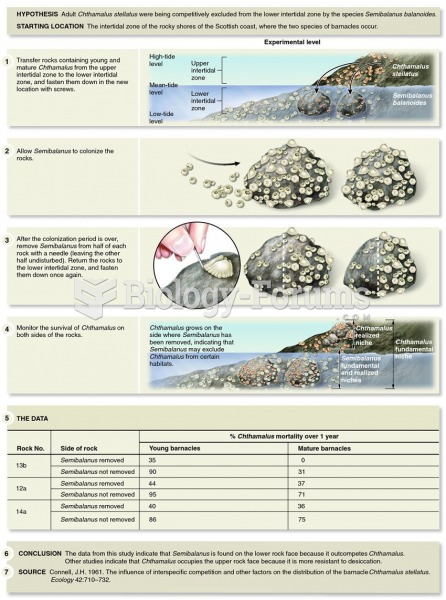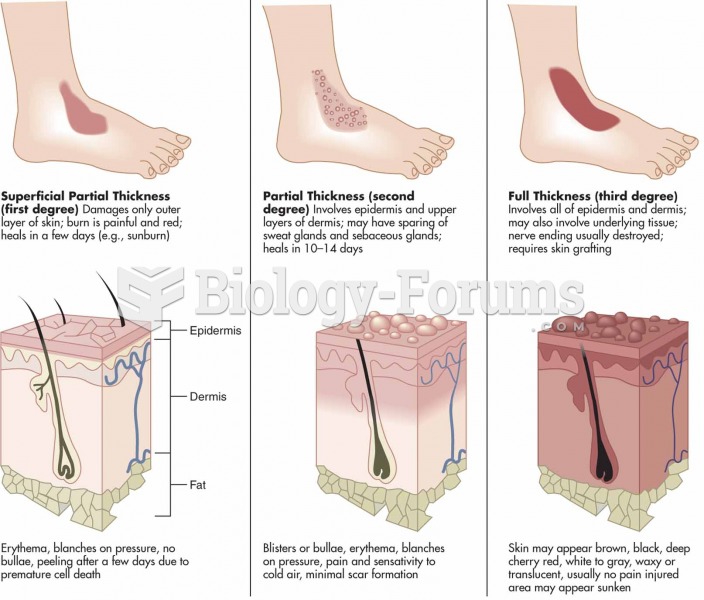|
|
|
The B-complex vitamins and vitamin C are not stored in the body and must be replaced each day.
A good example of polar molecules can be understood when trying to make a cake. If water and oil are required, they will not mix together. If you put them into a measuring cup, the oil will rise to the top while the water remains on the bottom.
Bacteria have flourished on the earth for over three billion years. They were the first life forms on the planet.
It is difficult to obtain enough calcium without consuming milk or other dairy foods.
Blastomycosis is often misdiagnosed, resulting in tragic outcomes. It is caused by a fungus living in moist soil, in wooded areas of the United States and Canada. If inhaled, the fungus can cause mild breathing problems that may worsen and cause serious illness and even death.







